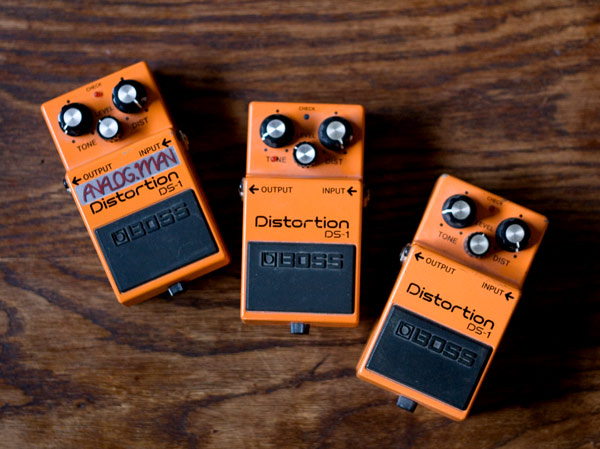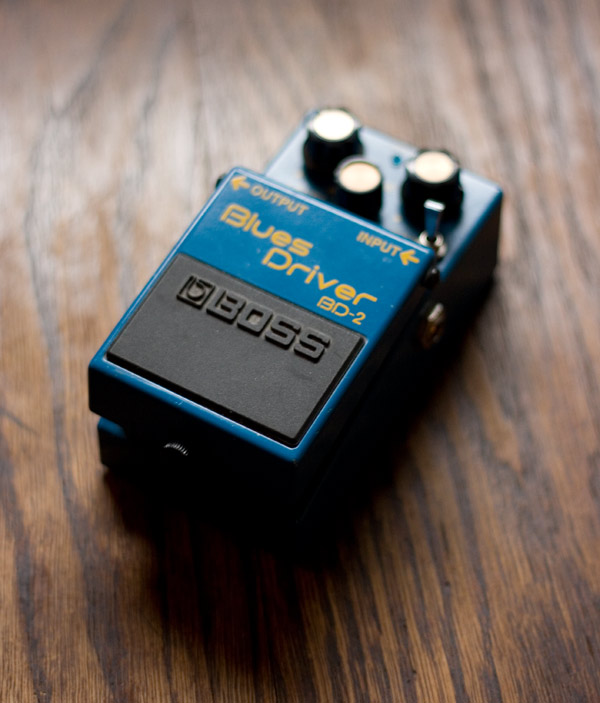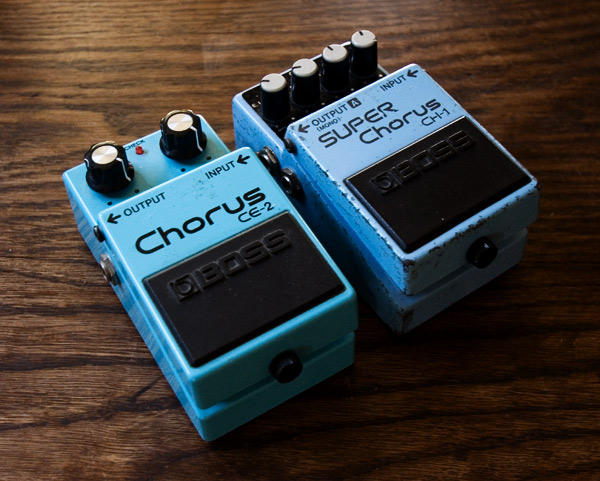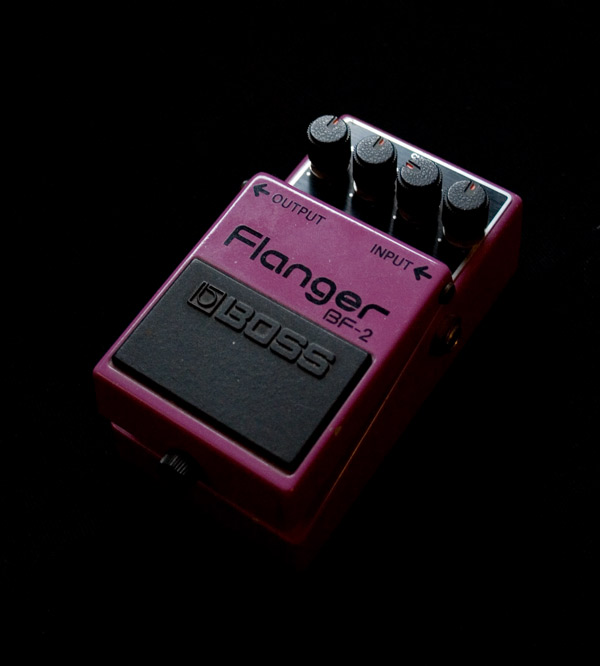The Boss DS-1 is one of the oldest distortion boxes on the market. Released in 1978, it is revered by some and loathed by others. Being a distortion, it offers more gain and more “hair” than a traditional overdrive pedal. Is it often used with a clean amp but it can be used to boost an already overdriven amp.
Amongst its supporters, Joe Satriani and Steve Vai are probably the most faithful and the most famous. Although both of them have released signature distortion pedals with manufacturers other than Boss in 2008 (Vai with Ibanez and Satch with Vox), the DS-1 could be heard at their gigs or on countless of their records before that.

I see a lot of comments on forums and on Youtube destroying the little orange box, labelling it as “synthetic sounding” or “shrill”.
Match of the mods
I do not know if it is because of that bad rep but the DS-1 is one of the most modified pedals on the planet. On my quest for tone, I acquired a DS-1 modified by Analog Man and a DS-1 modified by Robert Keeley. I also own a stock DS-1 and before I go into the merits of modified pedals, here is a video I have recorded. It shows the differences in tone between the three pedals. For this video, I have used my Gibson SG 61 Reissue and my Fender Champ amplifier. Delay and Reverb are courtesy of a Boss DD-3 and a Boss RV-3 (See after the video as to why I have used some delay and reverb on the video).
Why I used some delay and reverb
First, I owe you an explanation as to why I have used a Boss DD-3 delay and a Boss RV-3 reverb placed after the DS-1(s) while shooting the video. I think a large part of the bad rep of the DS-1 is due to the fact that probably too many people think that getting a DS-1 and using it on a dry amp will get them the tone of Satriani. News flash: it won’t.
To me, the DS-1 on full gain combined with Humbuckers is good at a certain type of lead tone but you have to consider the rest of the chain carefully. I think the DS-1 does benefit from some ambiance whether it is delay and/or reverb. Both Satriani and Vai often use some amount of delay in their lead tones.
This is where I disagree with a lot of distortion/overdrive pedal demos on youtube where people insist on close miking an amp and use no ambiance at all. It is quite unrealistic as there is 99% chance that on your favorite guitar record, at least some reverb was used to alleviate the super dry tone of a close miked amp. And when you go see a band live, you get the ambiance of the room, even in a small club.
Is it worth getting a modded DS-1?
Before blowing 150 bucks on a modified pedal, it is quite normal to question the advantages of a modded pedal. From the video above, you will have noticed that the modified pedals retain the essence of the DS-1. It is more about enhancing than radically modifying the tone. I must also say that modded pedals are a bit less noisy than the stock version. But if you really cannot stand the tone of a DS-1, chances are modded versions will not suit you either.
As to my opinion, I think the Keeley mod is about getting an edgier, more precise tone while the Analog Man brings the tone closer to a Marshall type amp. I personally prefer the Analog Man for its warmth and it comes close to the Pro Co Rat 2 as my favorite distortion box. But the Keeley might suit you better if you are looking for a more “Vai-esque” DS1 tone.
Note that both Keeley and Analog Man have more advanced mods than the ones I am showing in this post. My Keeley version is called SEM (seeing eye mod) and its current version has a toggle switch to go from this mod to another circuit called “Ultra”.
The Analog Man DS-1 I show in this post has the Pro Mod which is still available but you can now get a 4th knob to modify the midrange response.
Finally, please know that there are other modifications out there like Monte Allums’ which seem pretty popular.
The DS-1 on “Fiction”, my first album
I have used the Keeley SEM DS-1 on the lead tone of “The Color Purple” and the Analogman DS-1 Pro on “Electric Rain”. You can find “Fiction”, my first album on cdbaby. On both songs, the pedals were plugged into a Marshall JMP-1 Preamp set clean and an MXR Phase 90 was placed before the distortion.



